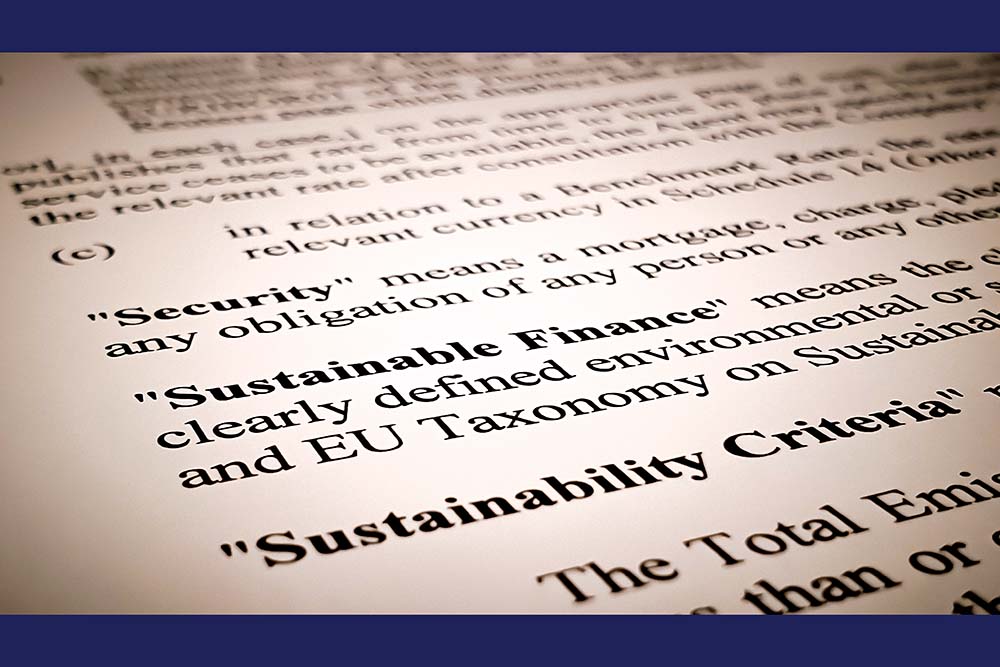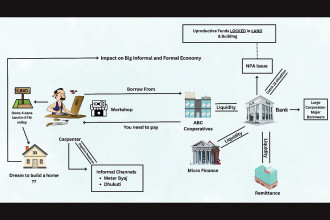
Having one’s own Green Taxonomy is a wise strategic step during periods when every country has kept the fight against climate change at the forefront. Despite being a small developing nation, Nepal has made a firm commitment to fight global warming together with resourceful countries. It would be a tactical move to have a clearer naming and classification of green activities and portfolios in place so that initiatives supporting carbon neutrality are coordinated and segmented aligning with the global norms.
This article aims to suggest how to set up stepping-stones on this pathway by using a few exemplary taxonomies as a reference tool in other regions of the world. Though there are common approaches to follow during formulating Taxonomy, it is vital to adopt policy borrowing to use with caution and as a study material because Nepal faces unique and varying challenges due to its divergent topography and biodiversity.
Concept & Evolution of Green Taxonomy
A ‘Green Taxonomy’ is a classification system used to categorise and characterise environmentally sustainable economic activities and investments. It is used to assist investors, businesses, and policymakers in identifying and promoting activities that have a sustainable impact. Green taxonomies seek to provide clarity and transparency about what qualifies as green or environmentally friendly. It helps investors and financial institutions with clear recommendations on ecologically sustainable projects and businesses to deploy funding to projects and assets that match long-term development goals as well as prevents ‘greenwashing,’ It promotes pollution avoidance, biodiversity preservation, circular economy principles, and sustainable use of marine and freshwater resources, also incorporated in the UN’s SDGs and the Paris Agreement.
With an emphasis on the preservation of natural resources and the battle against pollution, it first took shape in the middle of the 20th century with the emergence of environmental movements. Socially responsible investing (SRI) thought emerged in the 1960s when investors started considering social and environmental implications in addition to financial returns. To help governments assess and lessen the environmental effects of significant projects, environmental impact assessments, or EIAs, became essential in the 1970s. The Kyoto Protocol in 1997 raised awareness of the necessity for financing clean energy and low-carbon technology on a worldwide scale. Green finance norms, such as the Equator Principles, began to take shape in the 2000s. The European Union’s Green Taxonomy Regulation, which established standards for environmentally friendly economic activity across sectors, marked a turning point, nevertheless, in 2021.
International Landscapes of Green Taxonomy
One of the most preferred and commonly referred to green taxonomy frameworks in the world is the European Union’s Taxonomy Regulation, which came into force in July 2021. It keeps six main goals related to the environment in the centre such as climate change adaptation, climate change mitigation, sustainable use and protection of water and marine resources, transition to a circular economy, pollution prevention and control, and preservation and reconstruction of biodiversity and ecosystems.
It encourages investments in eco-friendly ventures, lessens the practice of greenwashing, directs investment decisions, and advances, wider policy goals - all of which contribute to the promotion of sustainability. It has also established a global standard for green taxonomy, giving rise to debates across the globe. Its mandatory implementation will need to take some review due to its complexity and associated expenses.
The United States has made significant progress in sustainable finance and voluntary ESG disclosure while lacking a full national green taxonomy similar to that of the European Union. Regulatory agencies in the US, such as the SEC, are investigating methods to standardise ESG reporting.
Likewise, the Green Technical Advisory Group (GTAG) has recommended the UK Green Taxonomy, which attempts to categorise environmentally friendly activities to improve comprehension of the environmental impact. GTAG recommends that the government establish a clear, believable, and practical taxonomy. Similarly, China has been pushing forward with its sustainable finance projects and green taxonomy to coordinate financial operations with environmental and sustainability objectives. The Belt and Road Initiative now incorporates green finance principles. The China Securities Regulatory Commission has developed a green securities classification system. India has also demonstrated significant progress in sustainable financing, as seen by its active involvement in the green bond market across multiple industries, including water conservation, sustainable transportation, and renewable energy. Transparency in the financial sector has been strengthened in India by regulatory agencies like the Securities and Exchange Board of India (SEBI), which has enforced ESG-related disclosures. To encourage further ethical behaviour, the Reserve Bank of India (RBI) released guidelines for loans tied to sustainability and green bonds.
Current Initiatives & Aids of having country-specific Taxonomy
Nepal has been making great progress in encouraging sustainability and ecologically friendly practices. The nation’s dedication to environmental preservation, renewable energy, and climate resilience is strongly linked to a commitment to sustainability and going net zero by 2045, even though the creation and use of a thorough green taxonomy are still in infancy.
Nepal is aggressively looking for ways to use its plentiful water resources for the production of clean energy, especially through hydropower projects. This programme supports the nation’s objective of lowering its carbon footprint and switching to a more environmentally friendly energy mix.
Nepal’s green financing programmes also heavily depend on sustainable agriculture techniques. The nation is attempting to encourage ecologically conscious farming methods to reduce agriculture’s negative effects on the environment while maintaining food security. In addition, rules for Environmental Social Risk Management (ESRM) have been introduced by Nepal Rastra Bank.
The adoption of green taxonomy in Nepal is highly relevant because of Nepal’s unmatched water resources, dense forest, fertile land, mountainous topography, and biodiversity. Nepal is also extremely vulnerable to the effects of climate change, such as altered precipitation patterns and glacial melt. A green taxonomy helps to ensure agricultural output securing food and health safety that enhances the long-term viability of the agricultural economy. It can be instrumental in raising financial resources through green bonds, and green climate borrowings and can have access to green climate funds, etc. Nepal can take a lead role in the international platform due to its credible stand on carbon-neutral initiatives earlier even than developed nations. By putting green taxonomy into practice, the nation can better identify and finance climate-resilient projects, like building infrastructure to prevent flooding in high-risk locations. Furthermore, Nepal can improve its international recognition and draw in more tourists by adhering to international sustainability standards.
Major Challenges for Nepal
In Nepal, creating a green taxonomy is fraught with difficult obstacles. Because of its Himalayan terrain, Nepal has unique climate change issues that need a customised strategy while developing its green taxonomy. Resilience-building measures should be prioritised due to the nation’s susceptibility to landslides, glacier melt, and changing precipitation patterns. Furthermore, the taxonomy’s emphasis on river, lake, and glacier protection underscores the significance of sustainable water resource management in Nepal. The nation needs to address problems with data availability and quality, as well as create a legal framework that complies with global norms while taking into account its particular circumstances.
To make sure that financial institutions and government bodies are prepared to use and oversee the concepts of the green taxonomy, capacity-building initiatives are required. For a taxonomy that is inclusive, transparent, and widely accepted, it is essential to involve a wide range of stakeholders, including corporations, civil society, and academics.
Furthermore, because of Nepal’s interconnectivity of economic activities, which include manufacturing, services, and agriculture, it might be challenging to classify certain activities as green or non-green. Given Nepal’s sensitivity to climate change and reliance on natural resources, the taxonomy has to be modified to take into account the cons when handling the transition to a green economy. Nepal must also look into issues including financial accessibility, oversight, enforcement procedures, and fiscal constraints. Making sure its taxonomy complies with international norms while handling geopolitical and regulatory issues is another challenge.
Scope and Coverage of Green Taxonomy
The process of creating and executing a green taxonomy legal framework is intricate and necessitates giving considerable thought to Nepal’s unique requirements. To make it effective in promoting environmental sustainability while simultaneously supporting economic growth, the government, civil society, and the business sector should work together. Building the ability of financial institutions, regulators, and companies to understand and successfully apply the concepts of green taxonomy is one of the most important factors in the successful implementation of green taxonomy in Nepal. It might be advantageous to broaden the taxonomy gradually to cover more economic and business activities.
A complete Green Taxonomy should cover aspects such as Definition and Scope, regulatory authority, stakeholder engagement, data and metrics, and disclosure requirements. Other issues and areas that need to be included in Green Taxonomy are categorisation and accreditation, incentives and penalties, monitoring and reporting, capacity building, enforcement and legal recourse, adaptability and review, and coordination with other policies.
For several reasons, Green Taxonomy reporting is supposed to be coordinated with Taskforce on Climate-related Financial Disclosures (TCFD) reporting. This alignment removes uncertainty caused by disparate reporting requirements and streamlines the reporting environment, relieving pressure on businesses that are already familiar with TCFD principles. The Green Taxonomy’s connection with TCFD reporting promotes sustainability integration across regulatory agencies and enterprises while also improving transparency.
Voluntary to Compulsory Adoption
For several important reasons, a developing nation like Nepal must gradually implement a green taxonomy. It makes it possible and easier for old, resource-intensive businesses to transition economically to a more eco-friendly and sustainable economy. A gradual strategy minimises employment losses and economic shocks by preventing abrupt disruptions in conventional sectors, which can be a complex transition. Adoption that happens gradually promotes the growth of essential skills and abilities.
Building capacity over time can guarantee that firms, financial institutions, and government authorities are ready to comprehend and apply green taxonomy in their operations. A gradual approach considers risk management, stakeholder participation, resource restrictions, and social factors. It also makes it possible to tailor green financing and investment criteria to the unique economic and environmental difficulties that developing nations like Nepal face. A more robust and sustainable route toward a greener economy is made possible by gradual acceptance.
In the context of sustainable finance and investing practices, the words ‘voluntary adoption of green taxonomy’ and ‘compulsory adoption of green taxonomy’ refer to the application of a green taxonomy framework. When a corporation or financial institution decides to employ a green taxonomy framework on its initiative, it is a voluntary adoption. They see benefit in applying the green taxonomy’s ideas and criteria to their investment plans, reporting procedures, and decision-making processes. When a government or regulatory body requires the use of a green taxonomy framework for a certain set of financial activities or reporting, this is referred to as compulsory adoption. It ensures compliance with the green taxonomy standards and principles mandated by law or regulation for enterprises and businesses.
The decision between mandatory and voluntary adoption is often influenced by the goals of a government’s policies as well as the aim to promote sustainable investment and finance practices more broadly. While the two strategies seek to promote environmentally conscious business practices, they diverge in implementation and reach
Having our green taxonomy cannot be avoided for long. Thus, every stakeholder, from the line ministry to other government agencies, the central bank, umbrella organisations, and business communities, must collaborate to formulate a workable, usable, and relevant taxonomy that can serve as a guiding principle for Nepal’s future efforts to achieve economic and environmental sustainability.





-1758271497.jpg)
